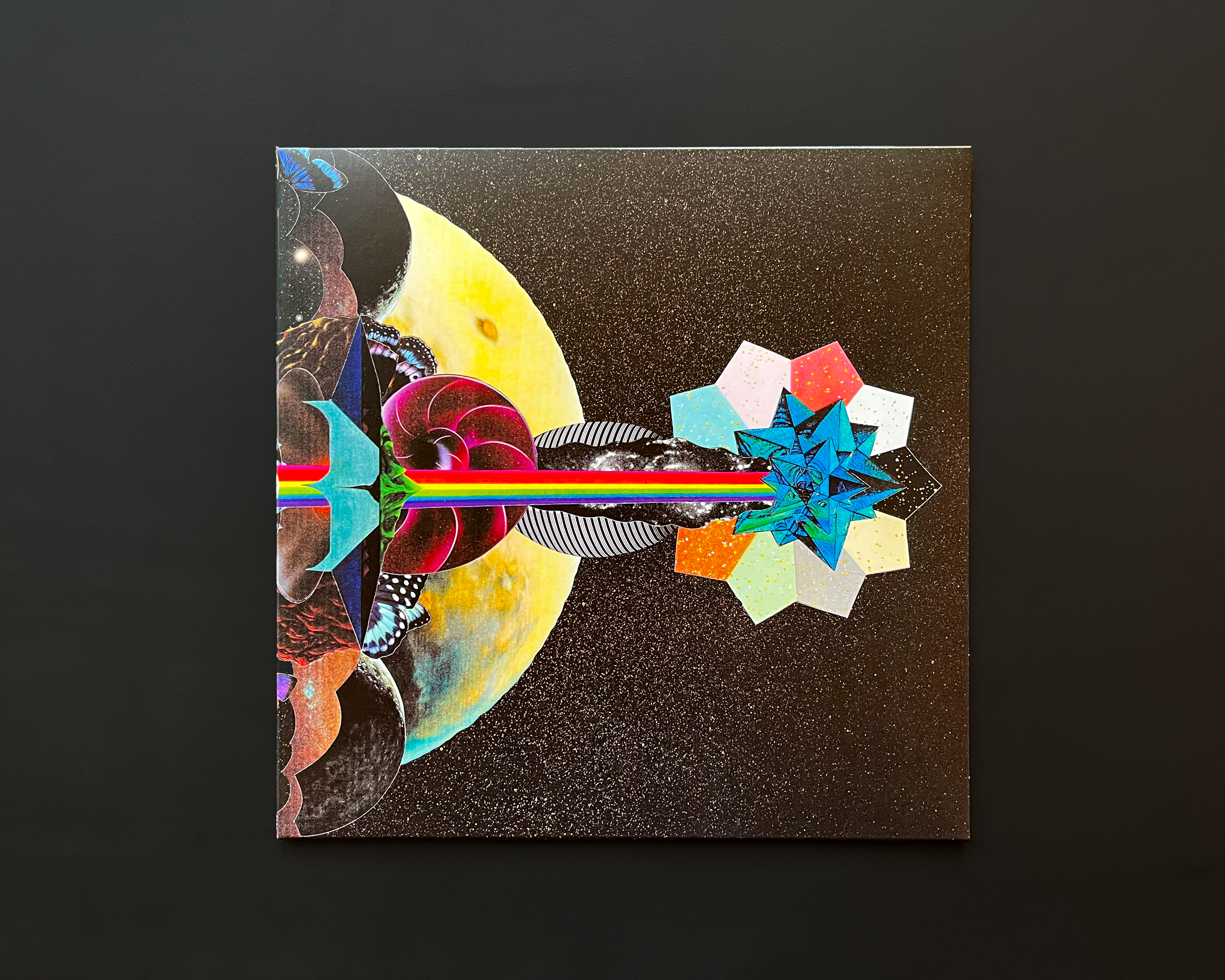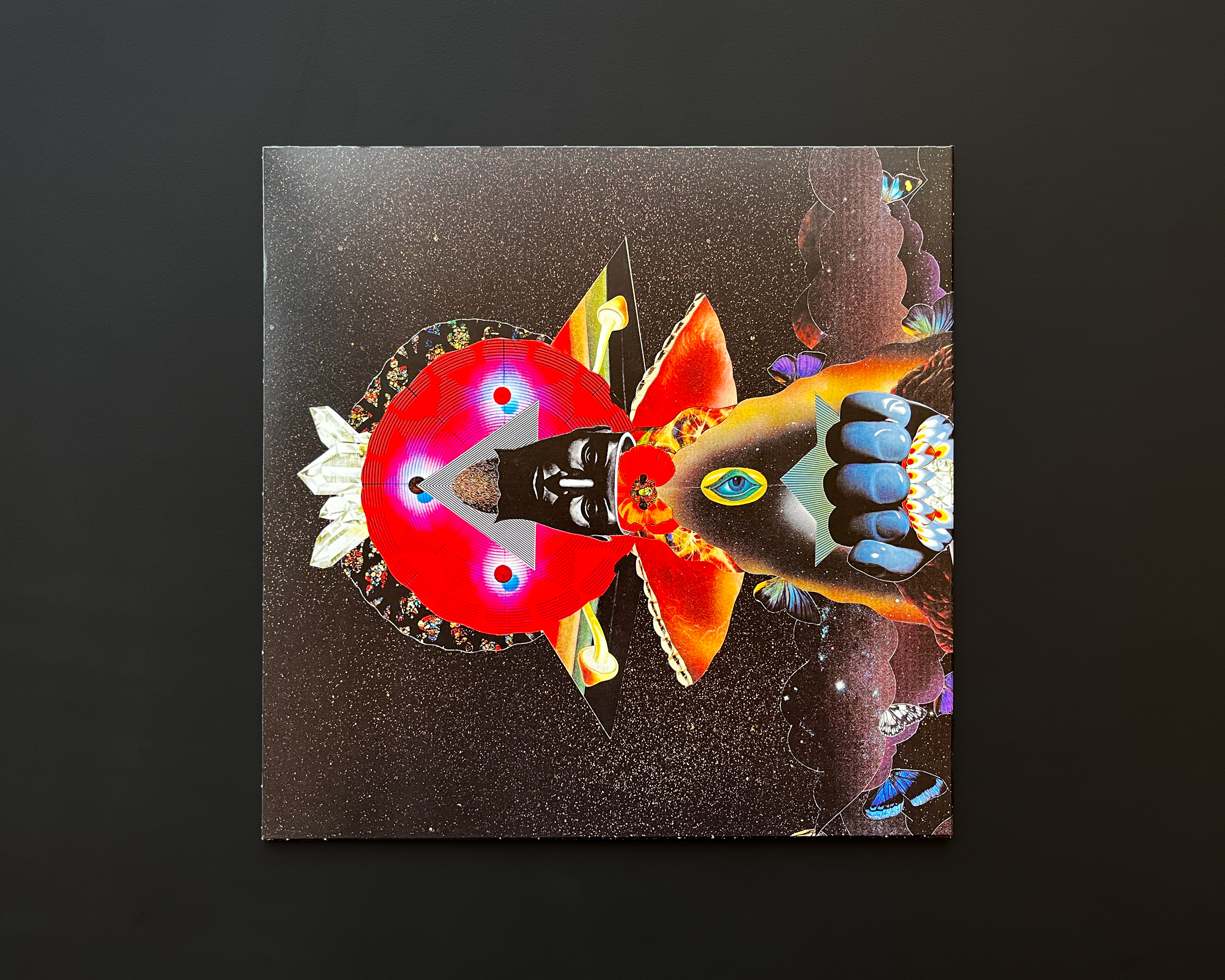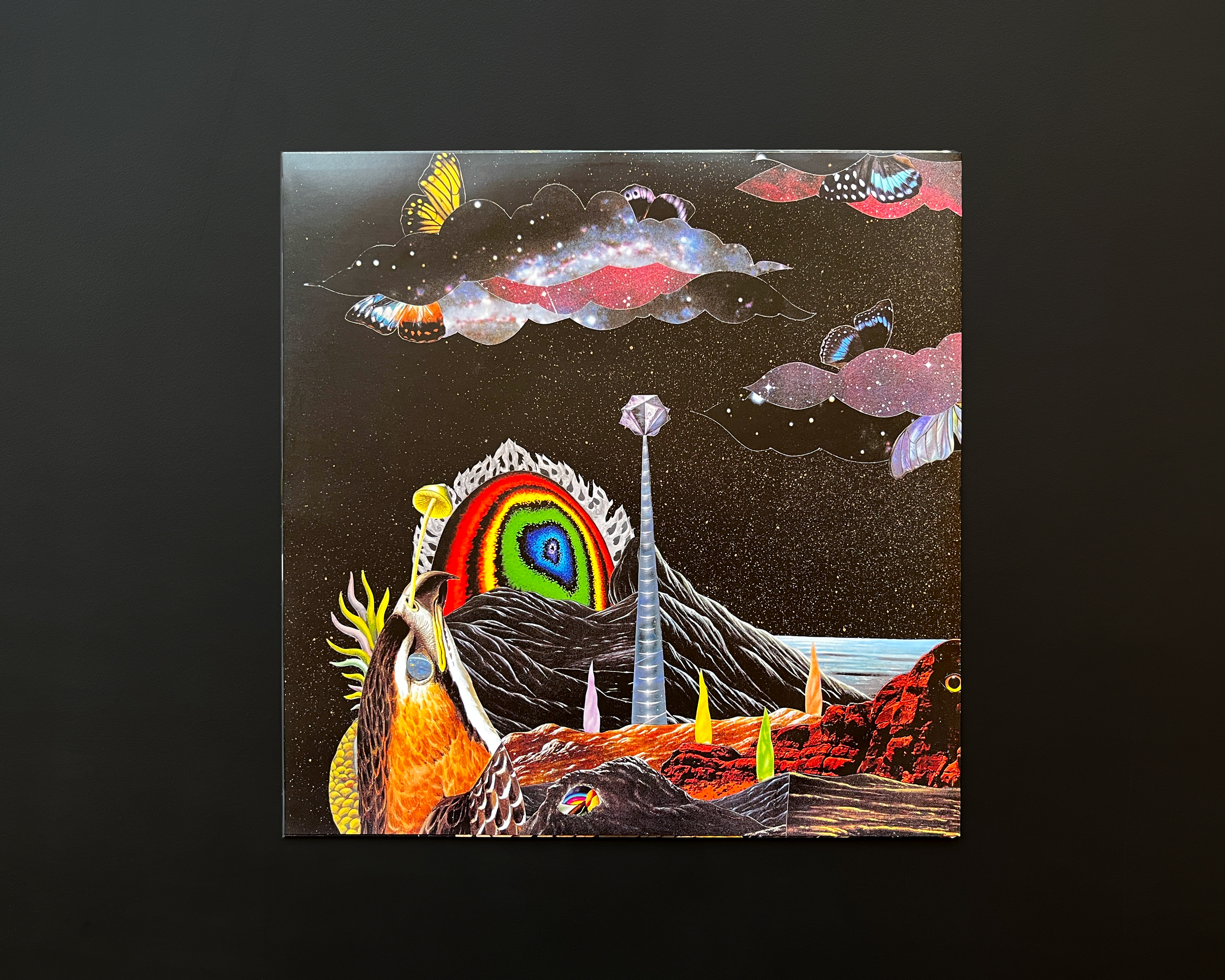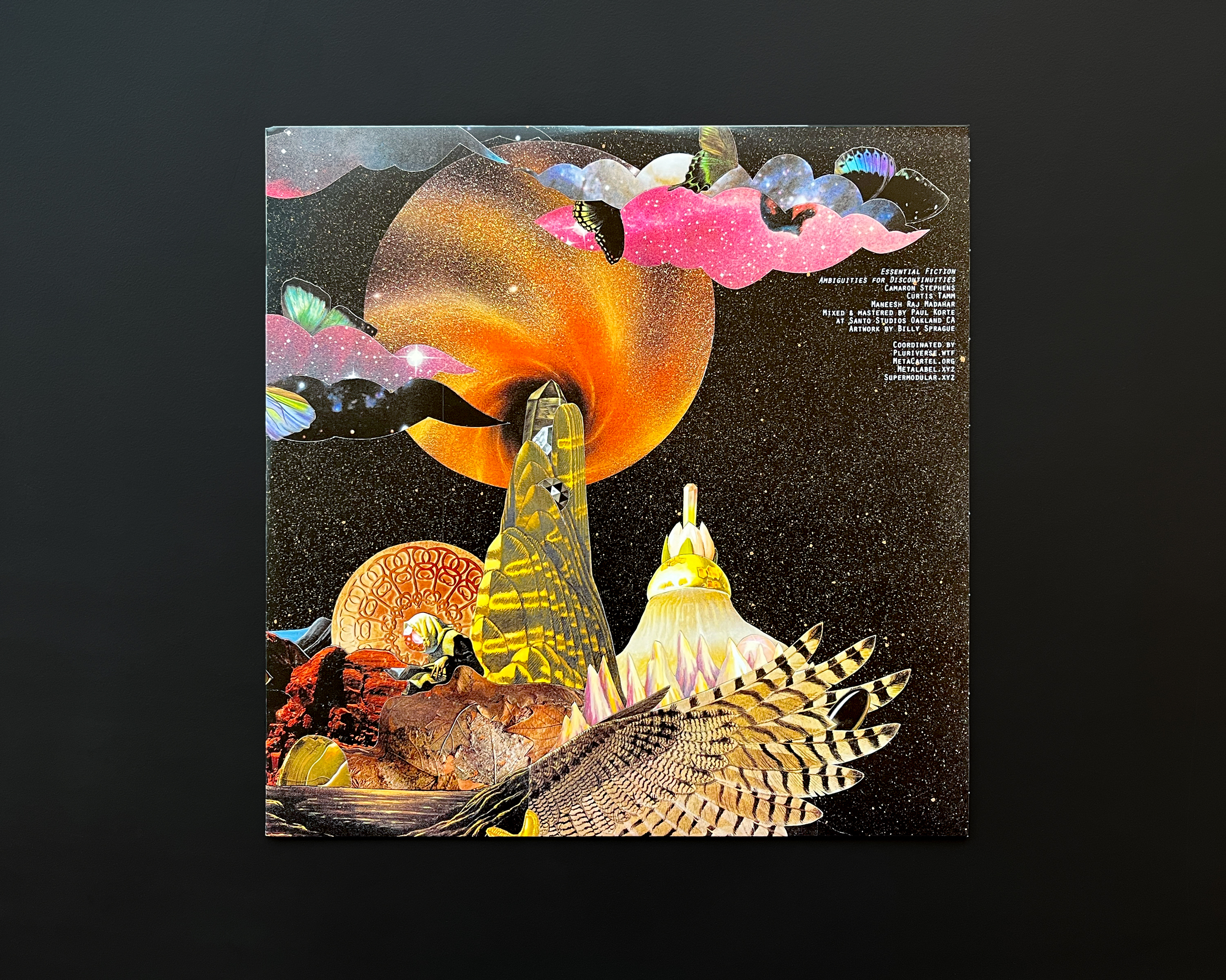Pluriverse.wtf commissioned a concept album! In this interview, the band discusses the creative process behind their elegant orchestration, exploring themes of blending analog and digital instruments, inspirations drawn from speculative future folk, and the intricacies of creating an immersive narrative. Additionally, they contemplate the value(s) of their music to themes in crypto economics and share thoughts on striking a balance between order and chaos in their collaborative composition process.
Grab your copy of Ambiguities for Discontinuities at Metalabel on June 13, 2023.

We'd love to hear from you all about the experience of making this album. Tell us about the instruments you used and the conversation you had internally. How did you discuss what you were making and how you were going to make it?
One of the things that kept coming up was trying to maintain a mixture of electronic and electroacoustic elements with simple acoustic instruments. We were excited by the confluence of these two worlds, the analog and the digital world. During each session, we created a solid acoustical space that allowed a hybrid world to emerge, responding to and coming out of the vacuum of underlying circuitry to bring those two spaces together. The compositions, the improvisational structures, formed the net in the middle.
We knew that we wanted to incorporate synthesizers and drum machines and pair them with acoustic instruments we had on hand, like folk instruments and classical guitar. We all have experience with these different ways of working, but besides that, we knew we wanted to combine them to form a synergy. The phrase speculative folk kept coming up, in reference to Ursula K Le Guin’s and Todd Barton’s soundtrack to Always Coming Home. There's something about the confluence of the acoustic and the digital that helped initiate our sense of forming a world, a fictional world, but also one grounded in a strong feeling of otherworldliness.

How about the lyrics? If we want to call them lyrics… the poetry, the prose, the voice that appears clearly amidst the landscape of the music. Is there anything you want to reveal about the writing of the text?
The writing felt aleatoric. We were thinking about how Merce Cunningham and John Cage would interact, a freedom and play amidst a thing firmly composed and choreographed. The two elements were married at some moment. There was a process of navigating, learning how to navigate and orient, a process of listening for the synergy. We all sort of sat together, and laid down pieces from the audio while I recited the text on the tracks, and we witnessed moments of synergy there, and we followed it. We discussed the narrative structure that formed the impetus for the project, thinking of it as a book that motivated the listener to take a journey. We talked about making a fictional narrative about travel, a feeling of going somewhere. Rather than the project being about one place or another, we wanted to craft an artifact from a place that no one had visited, or could hardly even imagine existing.
This project was posed as a response to the Pluriverse project and some of the core ideologies of the web3 space at the moment. I'm curious how that has influenced your decisions along the way. How might we think of this album serving as a vehicle for conveying your impressions and associations of pluriversal designs and ecologies within crypto economic communities?
We continue to grapple with these things, but I think the pluriverse correlates with the rejection of dualistic thinking, like entering into a fugal - and a fungal - modality where multiple rhythms are happening at once all simultaneously. We discussed a kaleidoscopic approach to using rhythms. One of the ideas was about having the tracks contain different rhythmic strands all playing simultaneously, to transduce a clear reversal for the listener. Not to make something explicitly evident, like in a engineered theory or currency algorithm, but to put one in a receptive listening state, open to less deterministic possibilities. That's a clear reversal, an inversion, away from clear economic thinking, but also correlated and responsive to it.
In the source material you sent us while preparing for this project, there was always something about hope, the diverse types of hope in being involved in the cultivation of what the players would look like or what digital money can do or bring about. We were thinking about the computer as an instrument, orchestrating where money is going, interfacing with analog currencies and the material world of value in sometimes silly and sometimes forceful ways, always trying to produce some kind of sense for the operator. This relates to the music, related to the back and forth between worlds, crunching and morphing this weird calculus that could be rationally communicated but somehow also defies explanation and wants to be felt and impulsively spent.

Immersing in an aural experience can often invite a whole host of acoustic realities, which by their nature are beckoning different kinds of imagination architectures. We talk about reverberant spaces - hall, basement, cathedral - and the imagined spaces that they allow to be opened up and inhabited in the consciousness of the listener. While listening, you can conjure all sorts of landscapes indigenously, inside your own associations. In some ways this is perhaps more commensurate with the idea of the pluriverse than a visual illustration, because the visual would concretely represent the space and then you would not be allowed to taste that chimera-like mirage emerging inside of yourself. There's more dimensionality to an aural experience, in that regard.
We discussed the feeling of a journey through the eyes of Anon (the character from the Pluriverse comics), based on who we imagined her to be and what she might be thinking. We talked about what kinds of experiences she would be having, how it would feel in her body, what she would be touching. The interface becomes this sort of hinge upon which we enter a hybrid space. We sink deeper and deeper into one end, it becomes less and less hybrid, and we lose track of what happens after that. The experience trails off.
One track on the album is concerned with the sounds of the interface. Another cues into the background movements of a world-scale computer that is maintaining our value operations. We talked about that certain feeling of holding a key to unlock something of great value, but also the responsibility of keeping it safe and the fact that it can be lost, and the fear that accompanies that vulnerability. That track, in particular, uses field recordings taken within a temple in Japan where people come to throw their coins into a large rectangular chamber with a vaulted grid on top, so you can't reach in and grab the coins back after you throw them in. Many devotional places, like shrines, have this arrangement, a strange interplay between a utilitarian or somewhat municipal structure, while casting an intent to the spirit realm. It’s literally an investment in the metaphysical with this circular piece of metal going into a black box, a psychosomatic social experience about distilling a little piece of ore representing a certain amount of time in life, earned through material labor, and now sacrificed to the invisible spirits so they might support us in turn. It's a lot different than sending funds to the crazed televangelists we see on TV in the states. The difference is in the acoustic and tactile quality, the quality of tossing the coin and hearing the performative rhythms and reverberations within the shrine architecture, and feeling the accumulation of spiritual wealth beneath the mirror-portal-pond, even though it remains invisible.
Can we discuss value in the abstract for a sec? There will be a desire to quantify the value of this project by those that have extended funding, and also those that are considering collecting the record, and those trying to make sense of this mysterious enigma-artifact coming from beyond the wall, dropped into the center of our little crypto garden here. They will want to know what to do with it, how to understand this wonder. And so, dear musicians, what are your thoughts on the value that this project has offered you? What would you hope to extend to these would-be listeners?

Where the rubber meets the road is in asking how does one live? Value is about meaning-making and generating significance and should illustrate, or be a vehicle for, how one lives. When we were commissioned for this project, we were like, Okay, we know what our life will look like now. It's going to be organized around this central kernel of an idea for a while. This alignment of values and interests, or meanings, became what occupied us during the process and gave our lives significance to define an outcome. Around the impetus to respond, we organized community practices and rituals and folk focus. The meditation organized our lives, what time we would wake up and how we would spend the day, a few weeks of intense focus upon this thing that we would impart upon others. We all felt sensitive to the responsibility there, to rise to the occasion of the influence this thing could have, and the need to ensure that the craft matched the values and didn’t spin off into a corrupt shade of the original source of inspiration. And that was valuable, for us.
Value could also be considered as the created space in which the boundaries of organization started palpitating. It proposes an organization as just one orientation toward the world among many other orientations that may appear chaotic or disorganized, or accidental. These other shapes present paradigms for thought that are outside of the realm of thinking in terms of systems. I think the creation of the music itself was like that. It was an improvisational composition and wasn't determined or even written down. How we organized each of the recording sessions embodied and transduced a way of interfacing with chaos. The listener gets to glean from that experience, as a polyrhythmic interest in these sometimes overwhelming acoustical spaces. It presents us with new ways of valuing the chaotic, and as a reorientation towards chaos.
Through discussing what these coordination failures are, we didn’t perceive a monstrous chasm between chaos and order. That seems more like a perspectival issue, like a mass of objects jumbled on the floor casting shadows and at a particular angle images are revealed. Now it’s two people kissing, but from another angle it's just a jumble of objects again, back to indiscernible raw data. There's something going on with this fleeting gestalt emerging from an experience, how we must continuously reorient our perspective to see the image peeking through the cracks of complex arrangements.
When collaborating, you’re literally immersed in someone else's chaos. You're tasked with trying to arrange their perspective in a way that makes sense to you, and maybe to allow for a third more unpredictable way of sensing. I was thinking about how nonlinear our process was in making this music. I start something and I end something, and someone else tosses in a few scraps from their world, torn up in pieces, and the grinding forms grit and rubble. All that friction changes the speed of things, and then suddenly I can see it. We could see - when we were making the album - the moments that were really interesting, worth paying attention to. All of it was interesting, but there were moments where we were totally swimming in it, where it created enough friction to hold onto.

I’ve been going to school for music composition. In the program we have many discussions about indeterminacy, randomness, chance, and compare them to deterministic compositions... And honestly I’m coming to think there’s not much difference between composition and indeterminate chance operations. Everybody is improvising in some way all the time; it just gets documented differently. Bach was considered the master of the fugue, a complex contrapuntal form of music, but he was also a master improviser. He incorporated a weird dichotomy between composition and improvisation that few recognize, but that’s a tension that’s proliferating everywhere if one can develop the aptitude for recognizing it.
We generated all this chaos and composition, and then we brought it to Paul Korte at Santo to master and add his vantage point to the mix. It really locked-in a lot of things. We had gotten so deep inside the shape-shifting center that we were no longer capable of seeing it from an objective standpoint. We built a house around ourselves that inhibited us in a way. It was incredible to observe how Paul listened, how he navigated the space we crafted, and hear that new fidelity he discovered and also witness the extraneous things that emerged as he was combing through the rough. It was really illuminating to hear it in the studio. We placed things just so, but the interactions at the bleeding edges and the radiating aspects they had through relation were unpredictable.
There’s a difference between a constraint, or a system of rules, and a sorting mechanism. The conundrum is perhaps less about degrees of freedom and more about a signal-to-noise ratio. Regarding value, it becomes a difficult problem when there’s so much content and it all feels so valuable. The problem is how to make sense of it, how to apply a system of regarding that value, how to make decisions about what signals deserved to be plucked from the writhing sea of possibility.
Value emerges from specificity. It’s difficult to orient by generalizations. I am constantly wondering what kinds of values we are orienting around as a society... Take pop music, for example: to orient behind having the broadest impact, to attract the broadest type of audience. The engineering could be incredible, but the specificity value is almost non-existent. This concept album project is definitely extended towards a specific orientation of people, at the risk of excluding some, but for the benefit of generating much more delicious value for those that take the time to unpack the complexities of the problem and the logic we used to sort through the chaos.

Making music, to us, is all about the approach and presence. Approach is the tool, how we think about the possible movements and interactions, and the nuances of the people we are creating alongside. Presence has to do with how we adjust ourselves in an environment, beyond the instruments and the concepts that steer behavior. Just as there’s a center, a sweet spot, between composition and improvisation, there’s also a saccharine core to crypto. Freedom is always dependent on the constraints of the situation and how we respond to the variables, to each other, and to ourselves. If you make a mistake, just do it again. Learn to love the mistakes and lean into them. Then they become part of the pattern we’re all weaving together, little tensions that make the whole thing more interesting. You play it once and it's a mistake. You play it twice and it starts to become jazz. I would rather listen to a few interesting failures than an infinite procession of perfectly, inhuman tuned systems.
‘Ambiguities for Discontinuities’ is the first music release produced by Pluriverse.wtf. It is made possible by the incredible support of Metacartel.org and Supermodular.xyz. Mint your copy (and collect the vinyl record) at Metalabel.xyz starting June 13th, 2023.